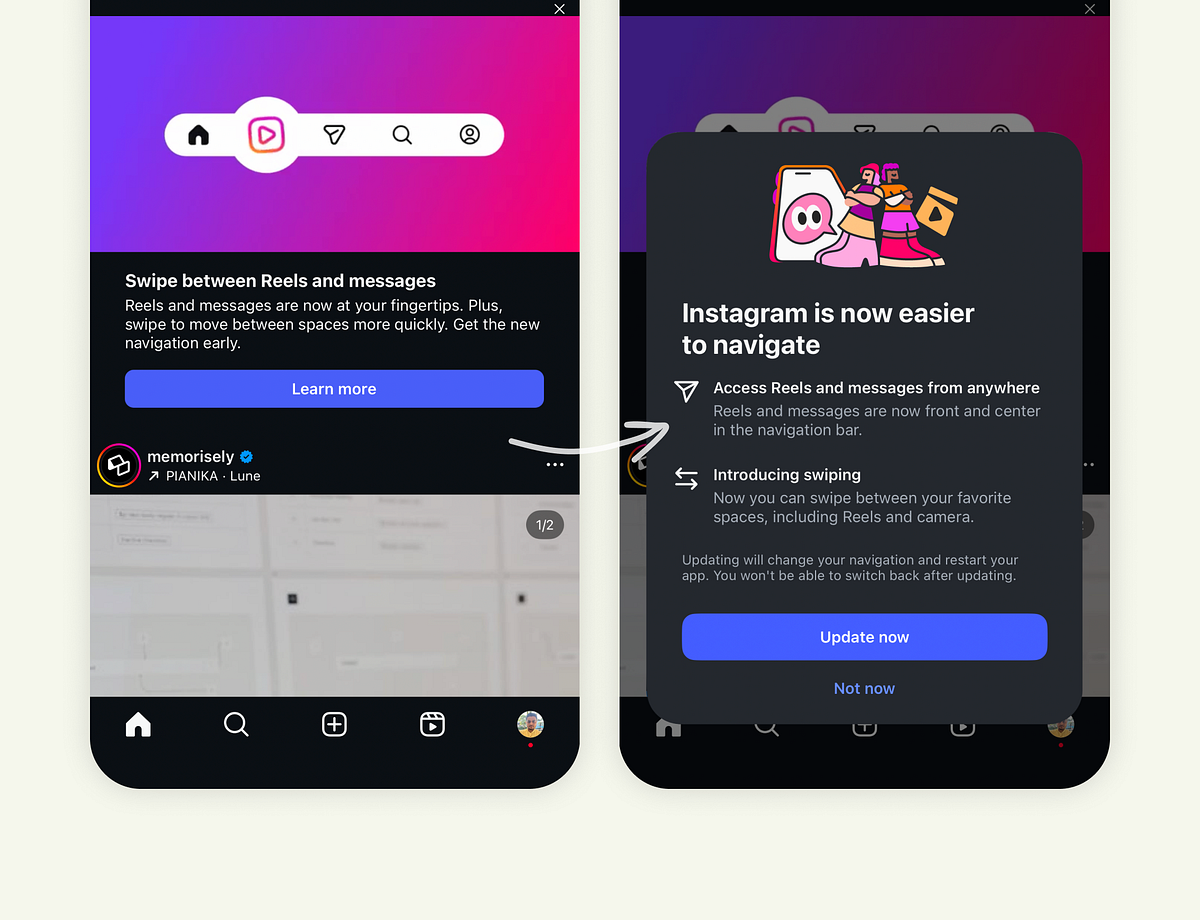#UX design
#UX design
[ follow ]
fromTreehouse Blog
6 days agoHow to Choose the Right Learning Path in Tech
Choosing a learning path in tech can feel overwhelming when you're just starting out. With so many options, from design to coding to data, it's normal to feel unsure about where to begin. The good news is that you do not need prior experience to explore these fields. With curiosity and a willingness to experiment, you can find a path that fits your goals and interests.
Online learning
fromLogRocket Blog
2 weeks ago14 cognitive principles every UX designer should know - LogRocket Blog
When my order arrived, I kept wondering how I could've missed something so obvious. The answer? Selective attention - our brain's way of focusing on what seems most important in the moment, while filtering out the rest. Cognitive principles like selective attention shape every user interaction - what people notice, remember, learn, and even the mistakes they make. Apply them thoughtfully, and you can reduce mental effort, guide users' attention, ease recall and retention, and even motivate users.
UX design
fromNielsen Norman Group
1 month agoGood from Afar, But Far from Good: AI Prototyping in Real Design Contexts
Over the past few months, the UX design field has been flooded with AI-powered prototyping tools that generate interfaces instantly from natural-language prompts. Despite the massive marketing hype, our evaluation with real design scenarios revealed that these tools can follow instructions to achieve a general goal, but they lack the sophistication to weigh design tradeoffs and produce thoughtful, high-quality designs without extensive guidance from humans.
UX design
UX design
fromeLearning
1 month agoUX Design with Adobe Captivate: Transform Your Courses from Functional to Exceptional - eLearning
Design learner-centered, accessible, and interactive eLearning in Adobe Captivate using UX principles to enhance comprehension, reduce cognitive load, and improve retention.
fromLogRocket Blog
1 month agoAI-first helpdesks: The UX shift businesses can't ignore - LogRocket Blog
Businesses replacing human support agents with chatbots isn't new. Even before the AI chatbots of today, which are extremely common now, companies were using heavily engineered chatbots that could understand only certain keywords and respond with specific answers. They were terrible, but the one remarkable thing about them is that they showed us what different demographics really expect from customer support and set the standard for how AI-first helpdesks should work - not only in terms of support agents but support overall, including documentation.
UX design
fromMedium
1 month agoWhat 5 Musicians Taught Us About Designing a Guitar Plugin Store
VeJa is a company that creates guitar plugins simulating amplifiers for music production. They were selling exclusively on the MOD Devices platform but wanted to expand their reach with their own online store. The challenge? They had great products, a loyal niche following, but no website. Just a logo. And us. The brief was simple: Our bootcamp team of three had just 8 days to prototype a e-commerce platform that would help VeJa compete
UX design
fromFast Company
1 month agoNew AI browsers could usher in a web where agents do our bidding-eventually
Using the internet with the help of an AI is a real thing-and it became even more real Tuesday when OpenAI, the generative AI industry's de facto avatar, announced the release of its new ChatGPT Atlas browser. A new race has begun to reinvent the Chrome-style browser experience we've used for so long: The race to reinvent the browser around natural language AI.
Artificial intelligence
fromClickUp
1 month agoFree Miro User Flow Templates to Streamline UX Design | ClickUp
A product team once spent weeks debating why their new signup process wasn't working. The forms looked simple, the copy was clear, and the buttons were exactly where they thought users wanted them. But when they mapped out the steps a customer actually took, they saw the problem: users were bouncing midway because the journey was cluttered with extra clicks. 🫤
UX design
fromMedium
2 months agoThe End of the User Interface?
The future of the human experience with digital products necessarily depends on the relationship we will have with information - whether predicted or post-dicted. The use of Artificial Intelligence (AI) and, soon, quantum computing, will dictate the evolution of the digital environment we live in and, consequently, the evolution of human beings themselves over the coming decades - or perhaps the next century.
UX design
fromMedium
2 months agoHero-centered design for meaningful products
Seeing your life as a Hero's Journey can make you happier, more resilient, and more fulfilled. But these same principles can also transform your digital products, helping you create more motivating and meaningful user experiences. In this article, I'll share insights from a recent paper on the psychology of the Hero's Journey. I'll explain what it is, guide you through a simple exercise to help you experience its psychological effects, and explore how you might heroify your own digital products.
UX design
fromSmashing Magazine
2 months agoFrom Data To Decisions: UX Strategies For Real-Time Dashboards - Smashing Magazine
Real-time dashboards are decision assistants, not passive displays. In environments like fleet management, healthcare, and operations, the cost of a delay or misstep is high. Karan Rawal explores strategic UX patterns that shorten time-to-decision, reduce cognitive overload, and make live systems trustworthy. I once worked with a fleet operations team that monitored dozens of vehicles in multiple cities. Their dashboard showed fuel consumption, live GPS locations, and real-time driver updates.
UX design
fromLogRocket Blog
2 months agoStop writing PRDs for AI - start using prompt sets instead - LogRocket Blog
UX designers frequently work in ambiguous spaces, most notably the discovery phase. We collaborate closely with product managers to identify new problems, understand users' goals and frustrations, and strategically develop solutions to address their needs. However, the best solutions aren't always straightforward, and with AI being embedded in every new product and feature, it makes things a bit more challenging. Just as we get comfortable using AI, something changes or evolves. This makes AI features unpredictable and difficult to document requirements for.
UX design
fromMedium
3 months agoWhy it's so hard to talk about preventing loss of trust with design
"Maintaining user trust matters a ton, especially in the age of AI. Whether you're in a highly regulated industry like FinTech or working B2B/SaaS, choices that erode user trust aren't just a UX problem: it's a business issue that costs companies millions."
UX design
[ Load more ]















